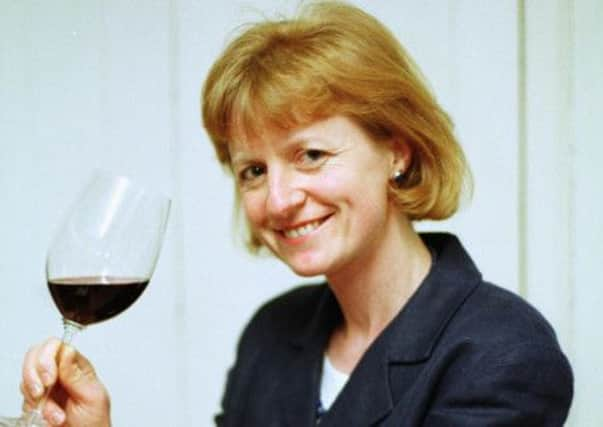Wine: The Alsace renaissance


The young female dynamo heading up Alsace’s largest wine estate, Domaine Schlumberger, is clear what she wants to do. She has a mission to tell the world that Alsace can make white wines as good as those from Burgundy.
“I believe that Alsace missed out when Burgundy and Bordeaux became famous,” she says. “Alsace was so badly affected in the war, having been passed in and out of German hands, that it took us a long time to get our region back together. When Burgundy and Bordeaux were focusing on quality wines, many people in Alsace were making cheaper white wines with the co-operatives. Now Alsace has been left behind.”
Advertisement
Hide AdAdvertisement
Hide AdThroughout my tour around nine wineries in Alsace, my group immersed themselves in Alsace culture. We tasted every grape, every style and we heard these same words many times – and it became clear that there was a great disparity in Alsace between dedicated winegrowers and those making the cheapest wine they can.
Alsace has spectacular vineyard terroir, a mosaic of different soils in the foothills of the beautiful Vosges mountains and a host of passionate winegrowers like Schlumberger, Zind-Humbrecht, Marcel Deiss, Weinbach, Hugel, Trimbach, Leon Beyer and Rolly Gassmann. Yet this little region of just 16,000 hectares is often forgotten. Even the people of Alsace don’t appreciate their own wines – in many restaurants we visited, the wine lists included more wines from other regions in France.
The overall impression on the tour was surprise at how many dry wines are being made in Alsace. Generally, rieslings were less well appreciated – and considered expensive compared to dry German equivalents – but the grape that most impressed was pinot gris. All the producers said it was a difficult grape to grow – so site selection is important. “Pinot gris suits those who like white burgundies,” says Jolene Hunter, a South African winemaker at Zind Humbrecht. “In Alsace it can make wines with a fabulous rich texture which go well with everything from mushroom risotto to roast pork with apricots.”
Another grape which appealed to our tasters was auxerrois. Not found anywhere else, it is a grape for those who like richer, dry, whites. But the grape Alsace champions is gewurztraminer. Our wine tour tasters were surprised to find dry, as well as sweet gewurztraminers. A good dry example is Zind Humbrecht’s Gueberschwihr with just three grams per litre of residual sugar and a fabulous underlying spiciness which makes it a great match with the cheese platter.
My overall impression is that Alsace is a bit like Burgundy – you have to stick to good producers. There are still far too many cheap wines being made here, which (apart from better co-operatives like Turckheim) should be avoided – and with the effects of the recession, this situation is getting worse.
So Alsace is not a place to go for everyday quaffers for under £5. It is worth spending more to get white wines with incredible richness and depth which can compete with Burgundy. Look out for 2007 and 2010 – two great vintages here – and for pinot gris. Alsace has some of France’s best wine estates – and they are not being appreciated enough at home or abroad.
OUR RECOMMENDATIONS
DRY WHITE
RIESLING LES PRINCES ABBES 2009 Schlumberger
(£11.99 each for 2, or £13.99, Majestic Wine)
Light, floral, dry with soft fruit notes: good value for Alsace riesling.
PINOT GRIS RESERVE 2007 Trimbach
(£12.95 for 2010 vintage, The Wine Society, www.thewinesociety.com)
Advertisement
Hide AdAdvertisement
Hide AdIf you prefer drier styles of pinot gris, try Trimbach’s ripe, smoky, textural examples.
ZIND 2010 Domaine Zind Humbrecht
(£13.95, The Wine Society; L’Art du Vin, Dunfermline)
A great combination of honey, citric fruits and almond notes with fresh vibrant acidity in this dry auxerrois/chardonnay blend.
OFF DRY WHITE
GEWURZTRAMINER 2011 Zind Humbrecht
(£12.99 each for 2, or £14.99, Majestic Wine)
Just off dry with a touch of residual sweetness. Lush succulent fruits with hints of gingerbread and spice: an affordable introduction to gewurztraminer made by a great grower.
PINOT GRIS GRAND CRU KITTERLE 2007 Schlumberger
(£25, L’Art du Vin, Dunfermline; Fintry Wines, www.fintrywines.co.uk)
Aromatic, gentle sweetness but racy acidity: try with foie gras or cheese.
SWEET WHITE
PINOT GRIS RANGEN DE THANN CLOS ST URBAIN 2010 Zind Humbrecht
(£43, Berry Bros & Rudd, www.bbr.com)
A combination of noble rot and volcanic soils: fabulously rich, minerally, complex with vibrant acidity. If you have patience to age this wine, it will become slightly less sweet.
ALTENBURG GRAND CRU 2007 Marcel Deiss
(£58, Lea & Sandeman; Roberson Wines)
Made from a mix of grapes: a wine with smoky, herby notes, great intensity, very sweet with long dry finish. Made by genius winemaker Marcel Deiss.
GEWURZTRAMINER VENDANGE TARDIVE 2005 Hugel
(£33, The Wine Society)
Advertisement
Hide AdAdvertisement
Hide AdFrom the ever consistent Hugel stable: a beautifully balanced late harvest wine with exotic fruits, sweetness, richness – but not cloying. Try with roast duck with apricots or crème brûlée.
• Join Rose’s escorted wine tours abroad in 2014 and 2015, email: [email protected]